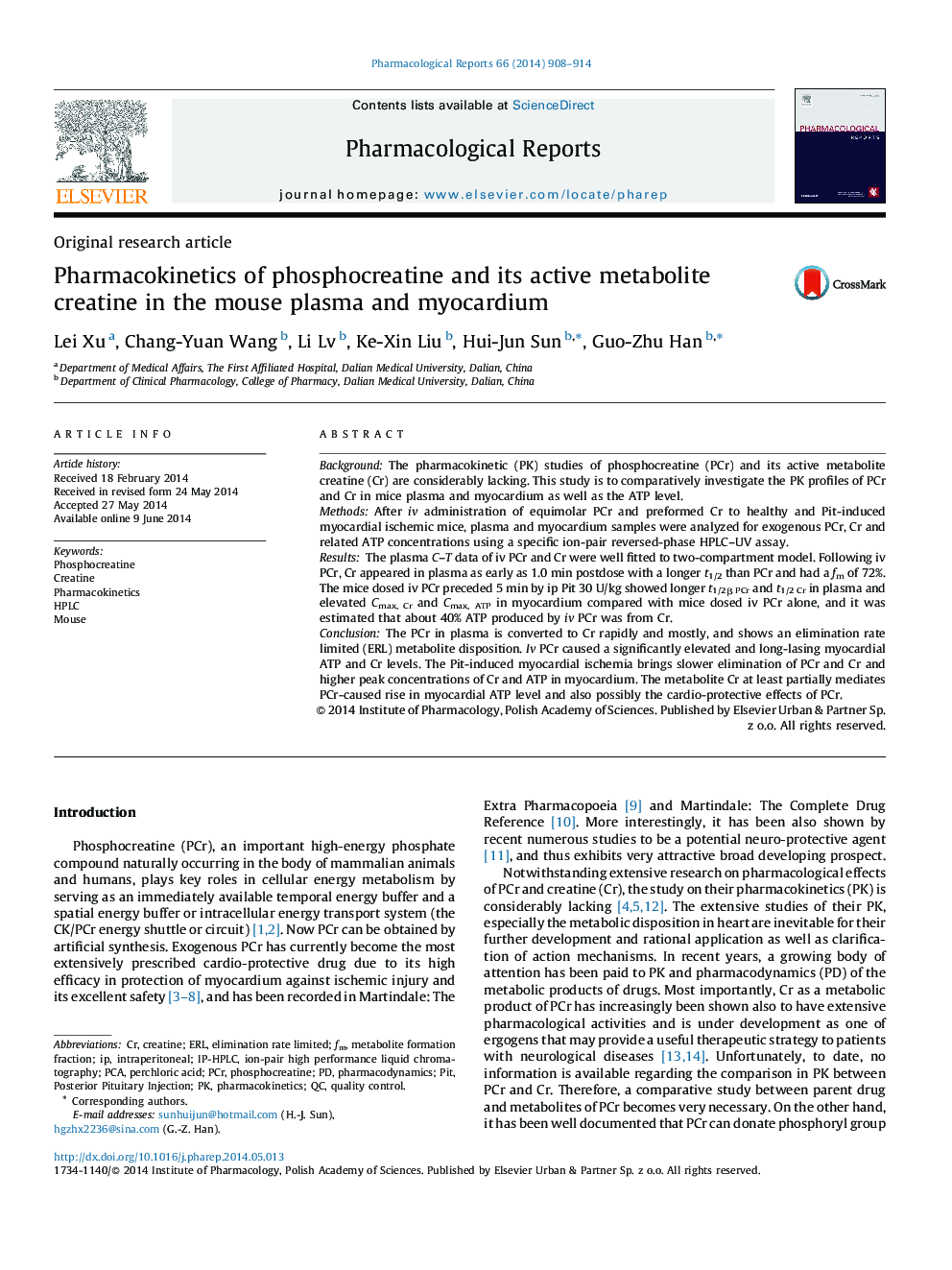| Article ID | Journal | Published Year | Pages | File Type |
|---|---|---|---|---|
| 2010919 | Pharmacological Reports | 2014 | 7 Pages |
BackgroundThe pharmacokinetic (PK) studies of phosphocreatine (PCr) and its active metabolite creatine (Cr) are considerably lacking. This study is to comparatively investigate the PK profiles of PCr and Cr in mice plasma and myocardium as well as the ATP level.MethodsAfter iv administration of equimolar PCr and preformed Cr to healthy and Pit-induced myocardial ischemic mice, plasma and myocardium samples were analyzed for exogenous PCr, Cr and related ATP concentrations using a specific ion-pair reversed-phase HPLC–UV assay.ResultsThe plasma C–T data of iv PCr and Cr were well fitted to two-compartment model. Following iv PCr, Cr appeared in plasma as early as 1.0 min postdose with a longer t1/2 than PCr and had a fm of 72%. The mice dosed iv PCr preceded 5 min by ip Pit 30 U/kg showed longer t1/2β PCr and t1/2 Cr in plasma and elevated Cmax, Cr and Cmax, ATP in myocardium compared with mice dosed iv PCr alone, and it was estimated that about 40% ATP produced by iv PCr was from Cr.ConclusionThe PCr in plasma is converted to Cr rapidly and mostly, and shows an elimination rate limited (ERL) metabolite disposition. Iv PCr caused a significantly elevated and long-lasing myocardial ATP and Cr levels. The Pit-induced myocardial ischemia brings slower elimination of PCr and Cr and higher peak concentrations of Cr and ATP in myocardium. The metabolite Cr at least partially mediates PCr-caused rise in myocardial ATP level and also possibly the cardio-protective effects of PCr.
